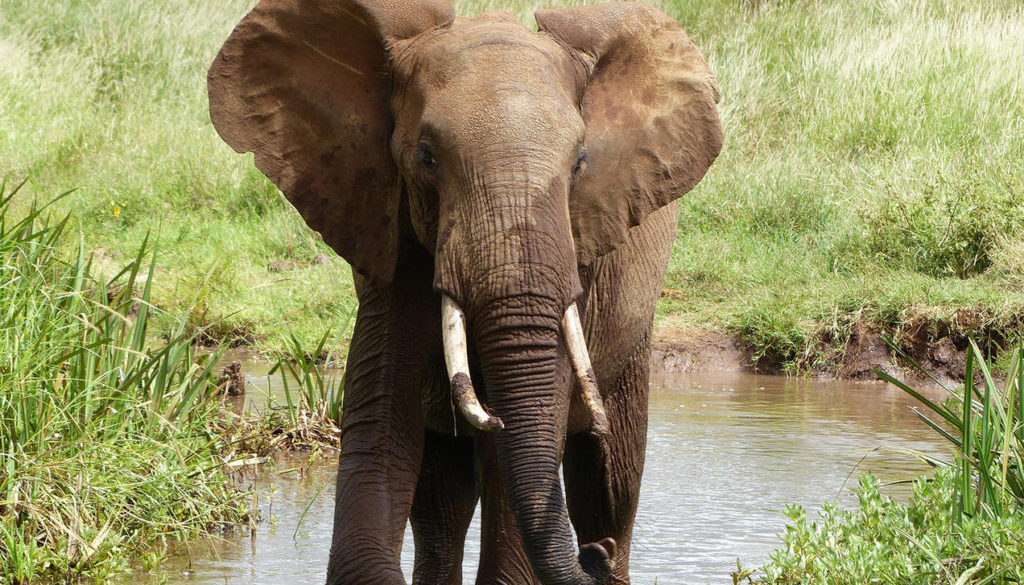How Trump’s ESA Rollbacks Will Affect Foreign Species
By Elly Pepper, Natural Resources Defense Council
As I’m sure you’ve heard by now, the Trump Administration’s U.S. Fish and Wildlife Service (FWS) finalized its drastic rollbacks to the Endangered Species Act this month.
What you may not have heard is how this will affect species being discussed right now at the World Wildlife Conference or 18th Conference of the Parties (CoP18) to the Convention on International Trade in Endangered Species of Wild Fauna and Flora (CITES), which purports to protect species from being driven to extinction by international trade.
Broadly, the ESA regulations will make it much harder to list species in several ways, including inserting economic considerations into listing determinations – instead of basing them solely on the best available science – and prohibiting consideration of threats that would affect a species in the “foreseeable future” (e.g., climate change) when determining whether to list a species as threatened. They also make delisting of species MUCH easier.
ESA listings have always provided foreign species – including CITES-protected species – with many benefits, all of which will now be much harder to come by. Here are five specific ways these changes could put the final nail in the coffin for foreign species, including those imperiled by trade:
- Reduces U.S. Funding & Assistance for Foreign Species – Under ESA Section 8, the U.S. may provide funding to foreign countries to protect species listed under the Act. This may include funds for in-situ conservation efforts, the acquisition of habitat, public awareness efforts and law enforcement trainings to improve the status of these species. For example, the Combating Wildlife Trafficking Grant Program, which prioritizes species that are categorized as threatened with extinction by the IUCN, listed under the ESA, and listed on CITES Appendix I, awarded over $3 million to 12 foreign countries in FY2018. Interior may also provide foreign countries with other types of assistance to protect ESA-listed species, including law enforcement investigations and research abroad, development/management of programs to conserve listed species, educational trainings for foreign wildlife management and law enforcement personnel, and the stationing of U.S. personnel abroad (e.g., law enforcement officers). Since Trump’s regulations make it harder to list all species, fewer foreign and/or CITES-listed species could receive these kinds of help.
- Eradicates U.S. Trade Limits for Threatened Species – Previously, the ESA banned imports, exports, and interstate trade of foreign species listed as threatened due to FWS’s blanket default rule that provided the same benefits endangered species enjoy to threatened species. But the new regulations get rid of that default rule, meaning when foreign species are listed as threatened under the ESA, imports, exports, and interstate trade in their parts won’t be automatically banned. This is a big deal. Even when species are listed under Appendix III or II of CITES, their parts can be imported and exported in and out of the U.S. And a CITES listing has no impact on the interstate (or intra-) trade of the species’ parts, even when they’re listed on CITES Appendix I—the highest level of protection.
- Allows More Trophy Hunting – Just ask Safari Club International’s CEO, who wholeheartedly supports the new regulations. That’s because the rollbacks – particularly the removal of automatic protections for threatened species – will allow Safari Club and its members to shoot more imperiled species and import their heads into the U.S. While Safari Club asserts that such hunting is a conservation tool, trophy hunting proceeds are very rarely invested into conservation efforts. And trophy hunting of species imperiled by poaching and other harms just doesn’t make sense.
- Reduces International Cooperation Regarding Foreign Species – Foreign species listed under the ESA also receive greater international cooperation. Indeed, ESA Section 8 actually requires the Secretary of Interior to encourage foreign countries to protect species listed under the ESA and to enter into bilateral and multilateral agreements to provide for the conservation of ESA-listed species. The Obama Administration used many of these diplomatic methods to encourage other countries (e.g., China) to ban their domestic ivory markets, in part because African elephants are listed as threatened under the ESA. Foreign species not listed under the ESA don’t get as much attention in this respect.
- Reduces Pressure on Foreign Countries to Protect their Species – The new regulations also impact foreign species in ways that are a bit more nebulous. For example, listing foreign species under the ESA signals to the rest of the world that we care about what’s happening to those species. This can encourage range states to improve management of those species. It can also show other countries that we recognize our own role in the decline of the species and are committed to being part of the solution–not just telling other countries what to do. For example, when the U.S., as a top consumer of ivory, banned its ivory market in 2016, other ivory-consuming countries followed suit, as they felt the U.S. was finally walking the walk. These kinds of benefits are, perhaps, less-discussed, but hugely important to bilateral relationships.
The U.S. has traditionally played an important role in driving global species conservation, creating models for conservation and setting precedents for protecting species by listing them under our ESA. Many countries throughout the world have even modeled their own wildlife conservation laws on our’s. By creating hurdles to species protections, the Trump Administration will hamstring the much-needed leadership that the U.S. has provided to the global wildlife conservation community for decades.
And all so we can make industries that profit from species destruction happy.

